Wondering if a 1 7/8-inch ball can work with your 2-inch trailer coupler? It's a common question for trailer owners. The short response: No, it's not advisable. Using a 1 7/8-inch ball on a 2-inch coupler can result in an unstable and potentially dangerous connection.
In the following sections, we'll explain why this mismatch isn't safe and guide you through the proper steps to ensure a secure connection between your trailer and truck.
Safety is paramount when towing, and understanding hitch compatibility is a key part of that. Keep reading to learn how to connect your trailer safely and confidently.
How To Safely Connect A Trailer To A Truck?
Ensuring safety is crucial when connecting a trailer to your truck. It's not just about having a hitch and a receiver; it's about doing it the right way.
Remember, towing increases the risk of accidents significantly, which can lead to serious injuries or even fatalities. Over 500 Americans lose their lives in trailer-related accidents every year.
To avoid becoming part of this statistic, follow these next steps to ensure a safe and secure connection between your trailer and truck.
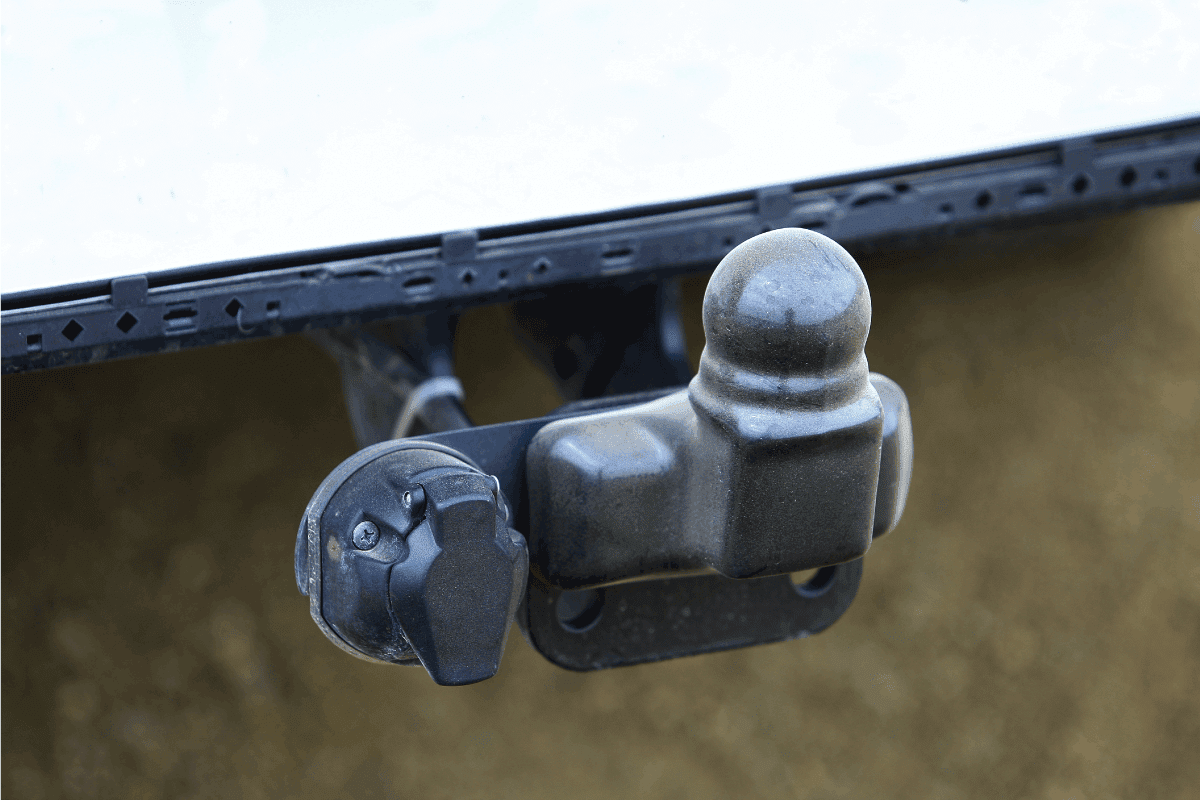
Step #1: Choosing the Correct Hitch for Safe Trailer Connection
Selecting the right hitch is the fundamental step in connecting your trailer to your truck. The size of the ball and hitch isn't just about fitting them together; it's about matching them to the trailer's weight capacity.
- Determine Trailer Weight: Understand the maximum weight your trailer can carry. This will guide you in selecting the appropriate hitch size.
- Matching Hitch Size to Trailer Capacity: For a heavy-duty trailer, say 30,000 pounds, a small 1-7/8-inch ball won't suffice. This size is suitable for light-duty trailers, supporting between 2,000 and 3,500 pounds only.
- Appropriate Size for Heavy Trailers: For a 30,000-pound trailer, opt for a ball diameter of 3 inches with a shank diameter of 2 inches or a 2 5/16-inch ball with a shank diameter of 1 to 2 inches. These sizes cater to heavier trailers, ranging from 6,000 to 30,000 pounds.
- Versatility for Different Trailers: If you're dealing with trailers of varying receiver sizes, consider a hitch with multiple ball sizes or a hitch with replaceable balls for flexibility.
Matching the hitch size to your trailer’s capacity is crucial for safe towing. It ensures the connection is strong enough to handle the load, reducing the risk of accidents.

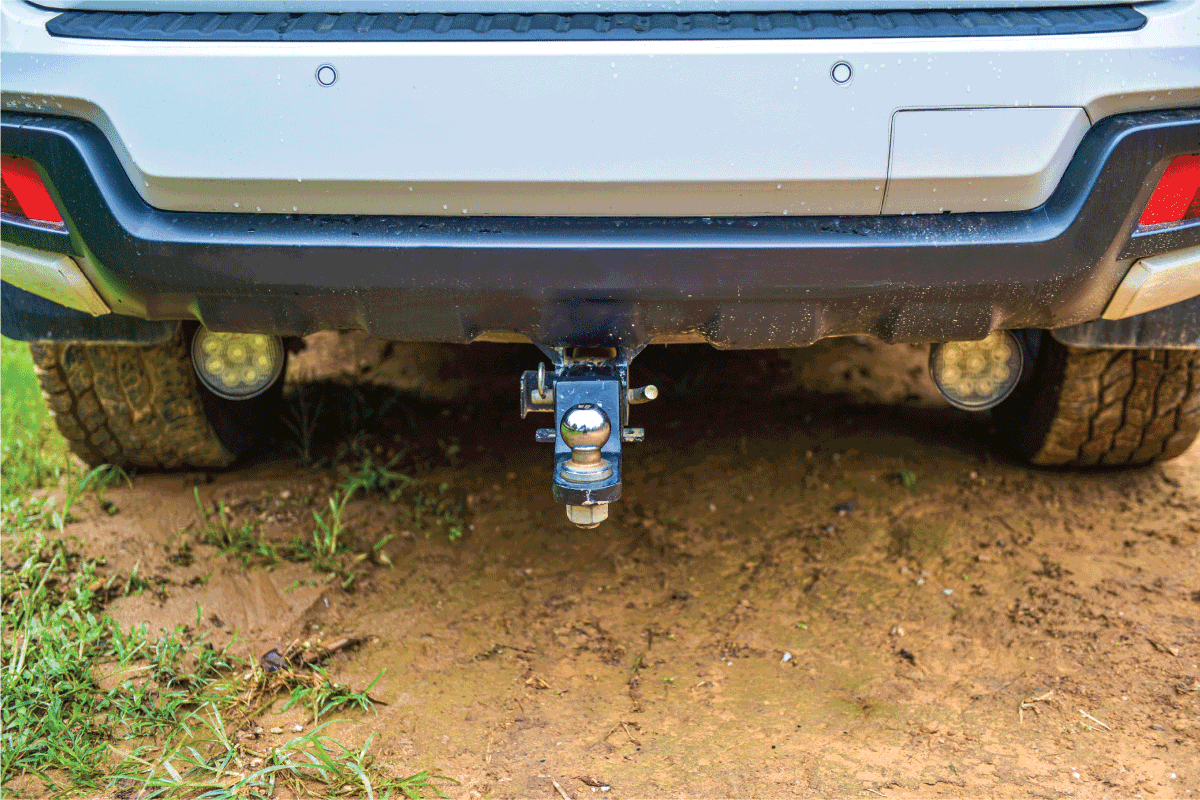
Common Trailer Ball Sizes For Safe Towing
The 2-inch diameter ball is a standard choice for many trucks and trailers. However, it's crucial to ensure it matches your trailer's capacity.
- 2-inch Diameter Ball: This size typically supports a load range of 3,500 to 12,000 pounds. It's ideal for travel trailers within a 10,000-pound weight limit.
- When to Upsize: If your travel trailer exceeds 10,000 pounds, consider using a larger ball size. A 2-inch ball may not adequately support heavier trailers.
- Risks of Using a Smaller Ball: A 1-7/8-inch ball reduces the weight capacity to 2,000-3,500 pounds, which may not be sufficient for trailers with higher capacities. This mismatch can lead to potential ball failure.
- Choosing a 2-5/16-inch Ball: For heavier loads, a 2-5/16-inch ball is a better option. It's larger than the 2-inch ball and can handle greater weights, making it suitable for heavier trailers.
It's essential to match the ball size with the trailer's capacity to ensure a secure and safe towing experience. Using the correct ball size prevents overloading and the risks associated with it.
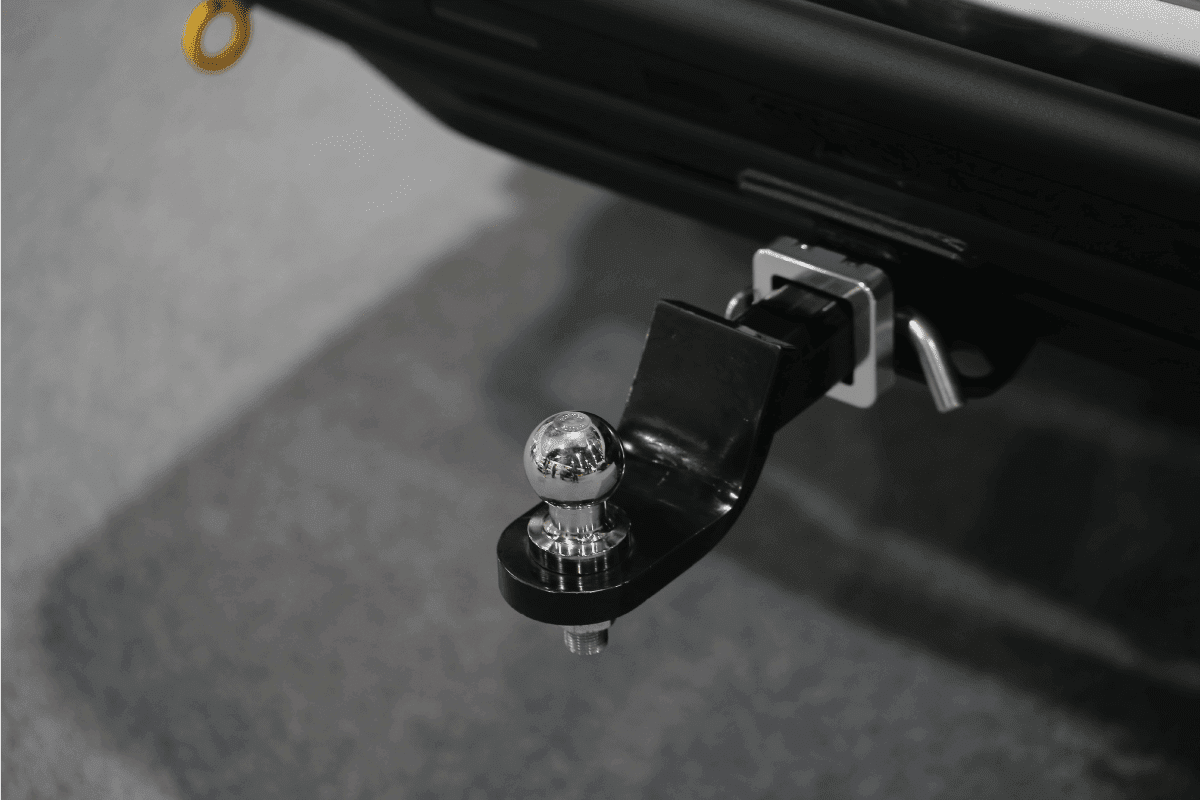
Step #2: Safely Connecting the Hitch to Your Trailer
When hooking up your trailer, having a guide is crucial, as the hitch is often not visible from the driver's seat. Although a backing camera can help, it's not always clear enough for distant hitches, so physical guidance is recommended.
Before connecting, ensure the trailer is slightly raised above your truck's hitch level, using the trailer's hand crank for height adjustment. This makes aligning the truck's ball hitch directly under the trailer's receiver easier.
For heavier trailers, this step is crucial since they can't be manually repositioned. Once aligned, slowly lower the trailer until the hitch securely clasps the ball. This process ensures a safe, tight connection vital for safe towing.
For those using a 5th-wheel hitch, removing it from your truck can be challenging. For step-by-step guidance, check out our guide, 'How To Lift 5th Wheel Hitch Out Of Truck [Step By Step Guide]?'.
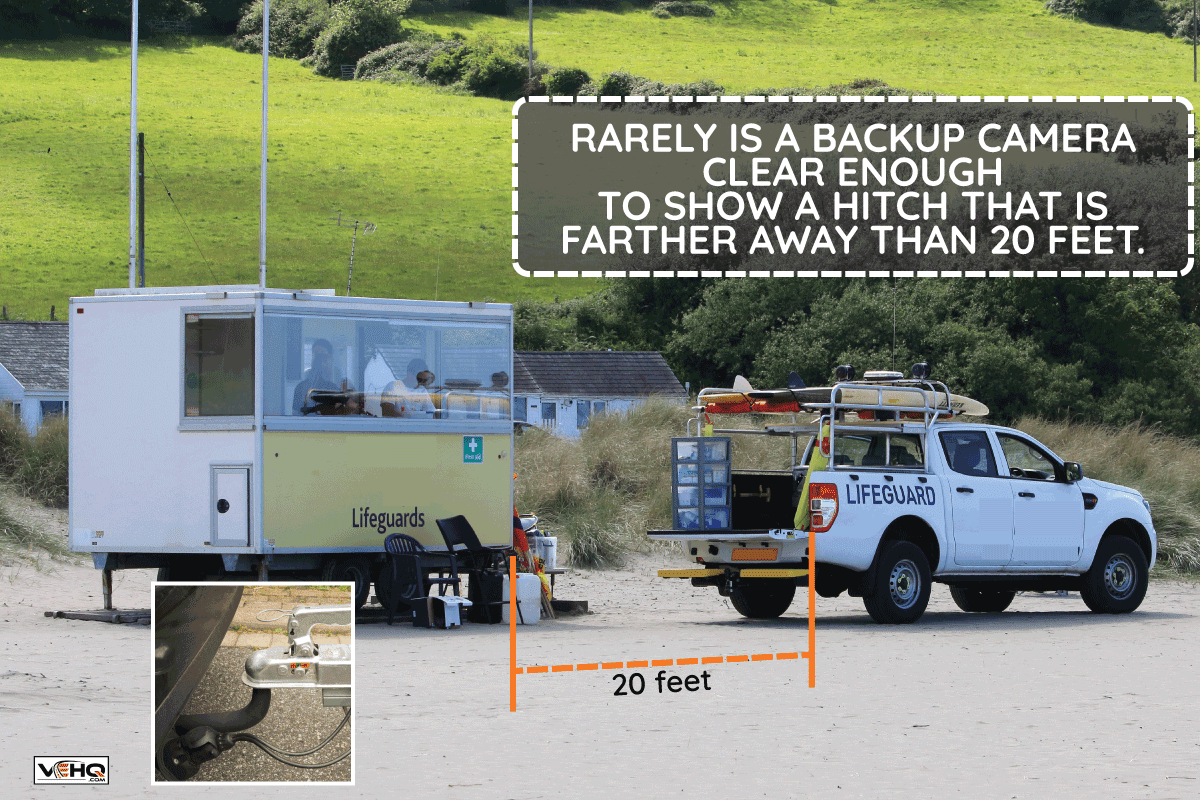
Step #3: Securing the Trailer with Safety Chains
After attaching the hitch, it's essential to connect safety chains as a backup in case the ball hitch fails. These chains should be strong enough to support the trailer’s gross vehicle weight rating (GVWR).
Cross the chains under the trailer's tongue to form an “X” shape. This way, if the hitch disconnects, the chains will catch the trailer and prevent it from dropping. Ensure the chains are neither too long to drag on the road nor too tight, allowing enough slack for turns.
Securely attach each chain from one side of the truck to the opposite side of the trailer and lock them in place. Properly connected safety chains are a critical step for a secure and safe towing experience.
Step #4: Establishing Electrical Connections
After hitching the trailer, it’s crucial to connect the power cables and verify that all trailer lights are functional. This ensures safety, especially during night travel or poor visibility conditions. Enlist someone to observe the trailer's rear lights while you test them from the truck’s driver seat.
If any lights are non-functional, get them repaired immediately. Inspect the power cables for any signs of wear or damage, as these could lead to lighting failures on the road. Additionally, check the wire connectors and use a contact cleaner to remove any corrosion, ensuring a reliable connection.
If you notice any issues with the wiring, have it fixed by a mechanic before embarking on your journey. Remember, proper lighting is not just a convenience but a legal requirement for safe towing.

Hosa D5S-6 CAIG Contact Cleaner is available on Amazon through this link.
Step #5: Setting Up Weight Distribution for Stability
Equipping your setup with a weight distribution system is a key step for enhancing road safety. This system balances the trailer's weight across the truck's wheels, providing much-needed stability during your travels.
It's especially important in preventing the trailer from sagging and maintaining a level alignment between the truck and the trailer. Using a weight distribution hitch is often crucial for carrying heavy loads safely.
It allows you to utilize the trailer’s full capacity without compromising on stability. However, it's not a one-size-fits-all solution. Vehicle manufacturers often provide specific recommendations regarding when and what type of weight distribution hitch to use.
Therefore, it's advisable to consult your truck’s manual for guidance on selecting the appropriate system for your towing needs. This ensures that both your vehicle and trailer handle optimally, minimizing risks on your journey.

Camco EAZ LIFT Elite Weight Distribution Hitch is available on Amazon through this link.
If you notice your weight distribution hitch making a popping noise, it's important to address it promptly. Learn more about why this happens and what you can do in our detailed article, 'My Weight Distribution Hitch Is Making A Popping Noise – Why? What To Do?'.
Step #6: Trailer Brakes and Breakaway Cables
Trailers equipped with braking systems offer an added layer of safety, especially for maintaining stable speeds on the road. If your trailer has brakes, it’s crucial to connect the breakaway cable to your truck.
This cable should be attached separately from the safety chains or the ball mount to ensure it functions correctly in emergencies. The breakaway cable's role is vital in preventing accidents if the trailer becomes unhitched.
Should the trailer detach, the backward motion will tug on the cable, activating the trailer’s brakes. This automatic response slows down and eventually stops the trailer, averting potential hazards on the road.
For your safety and that of others, ensure this cable is securely connected and functional before embarking on your journey.
Step #7: Essential Final Checks Before Hitting the Road
Before setting off on your journey, a key step is to familiarize yourself with the traffic regulations specific to trailers and trucks in your destination area.
Compliance with these rules is not just a matter of legal necessity; it’s also a proactive measure to ensure smooth and hassle-free travel. Different states may have varying requirements or restrictions, and being aware of these can significantly reduce the likelihood of encountering problems en route.
Taking the time to understand and adhere to these regulations can make a substantial difference in the safety and ease of your travel experience.
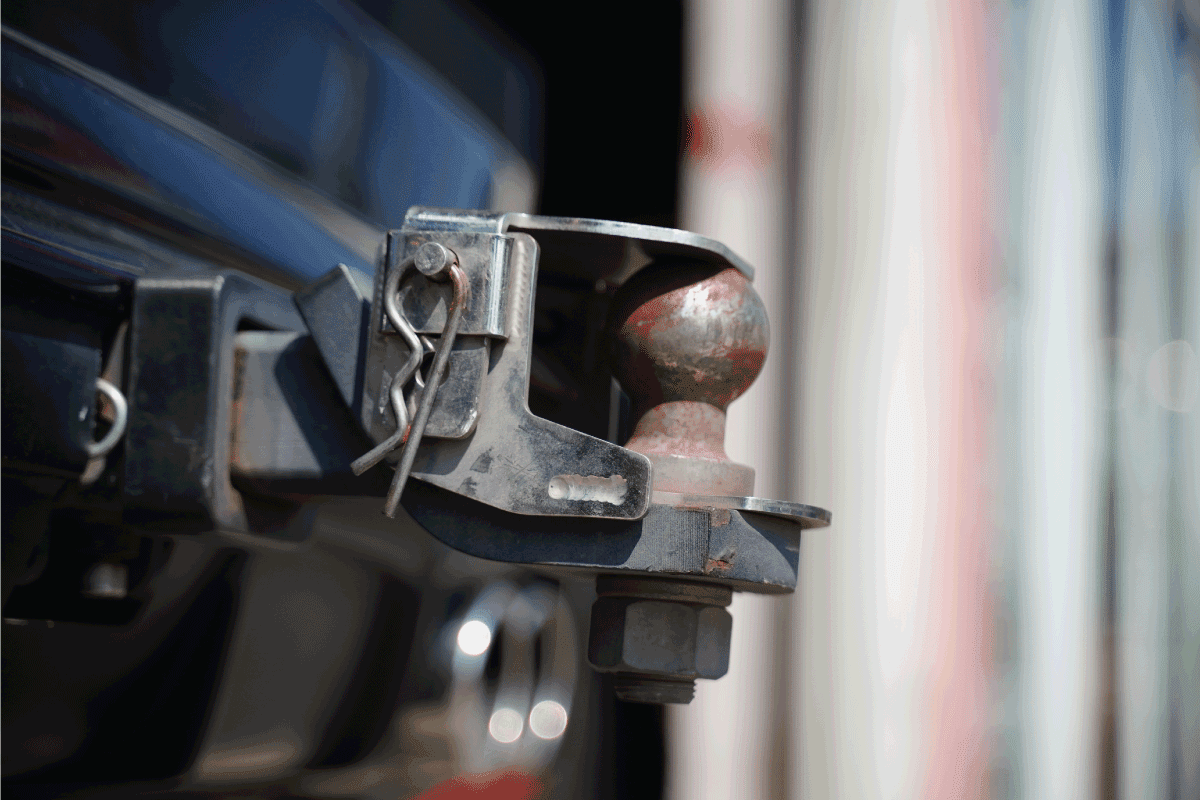
The Right Fit Matters: Safeguarding Your Journey
In conclusion, the importance of using properly sized hitches cannot be overstated. It’s a fundamental aspect of ensuring your travel is safe and secure. If you ever encounter challenges in connecting a receiving hitch and a ball hitch, don't hesitate to seek assistance from a qualified mechanic.
Having an expert examine and, if necessary, repair your hitch system is a crucial step in safeguarding your journey. Remember, the right fit is not just about convenience; it’s primarily about ensuring the safety and reliability of your travel setup.
